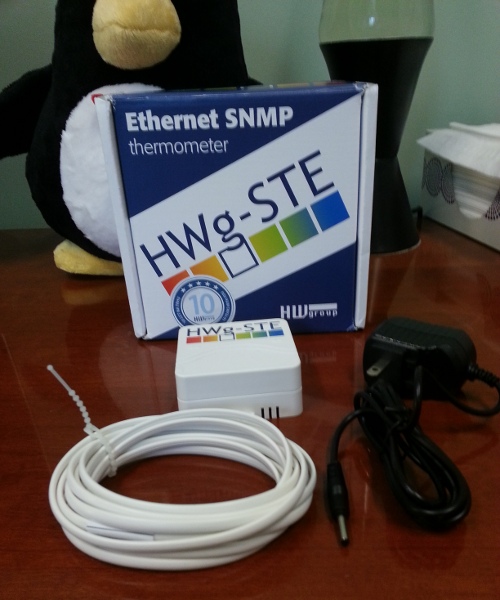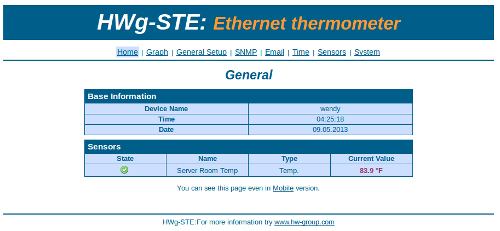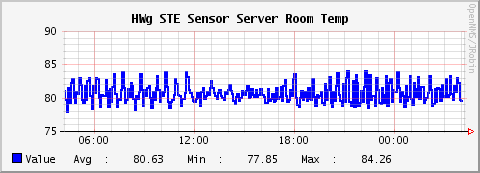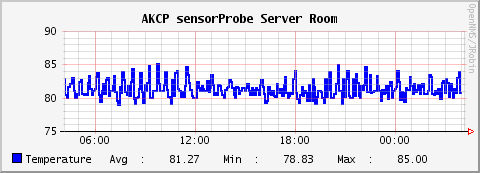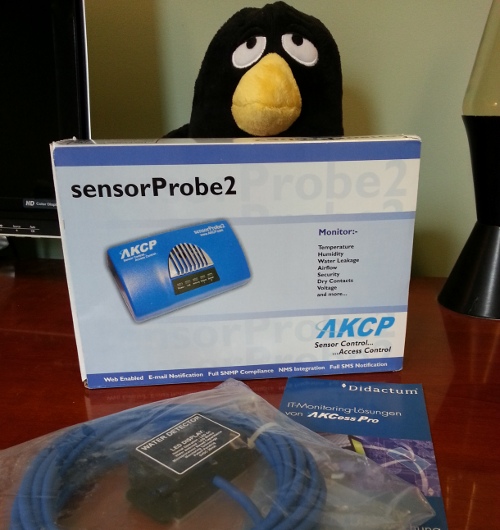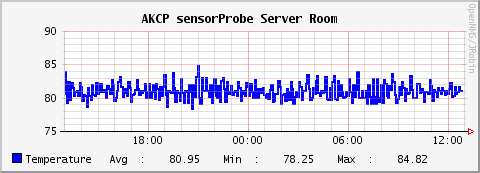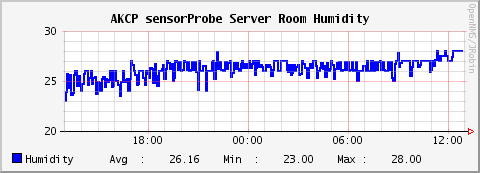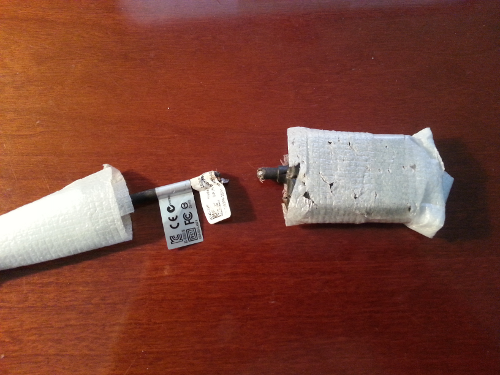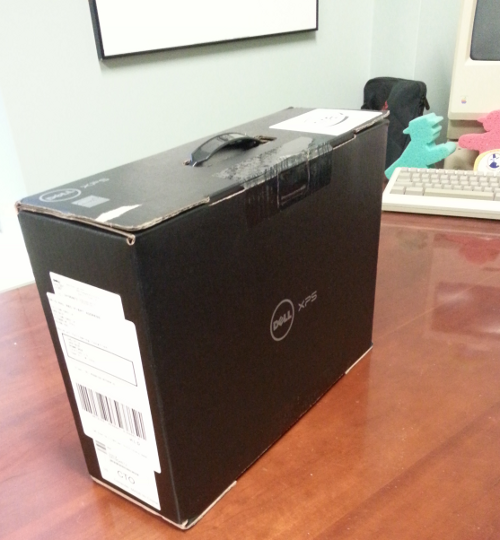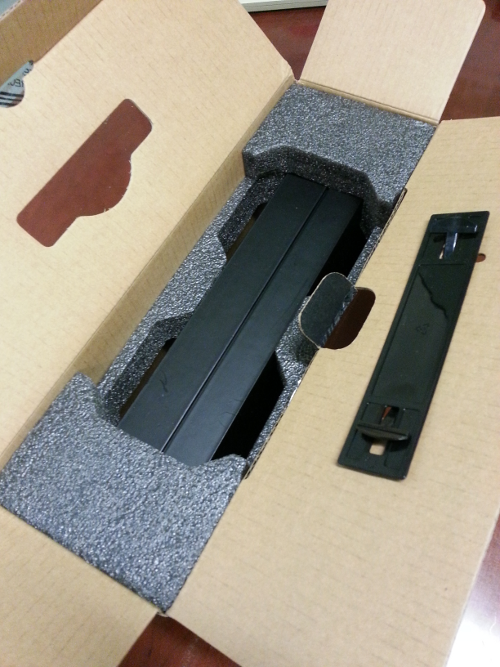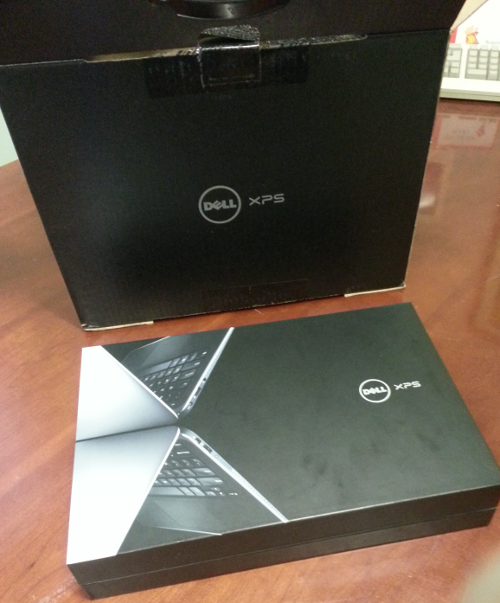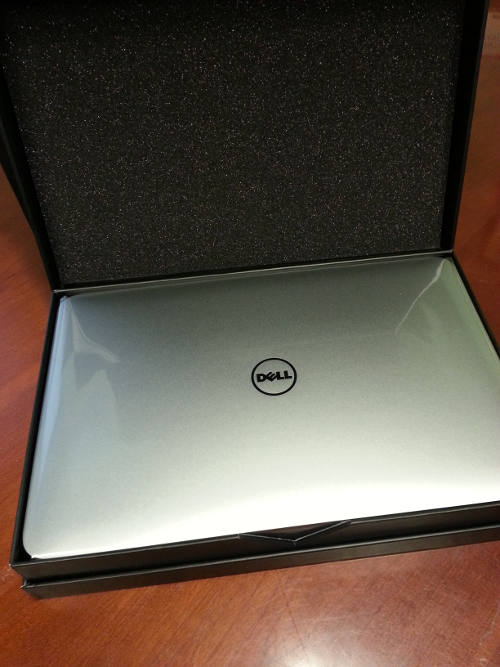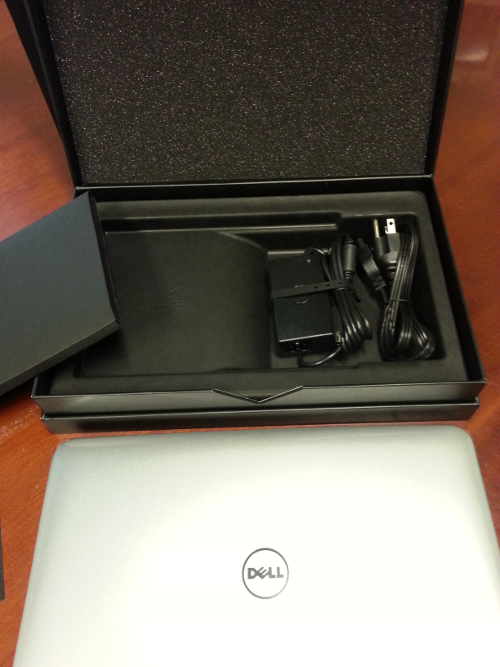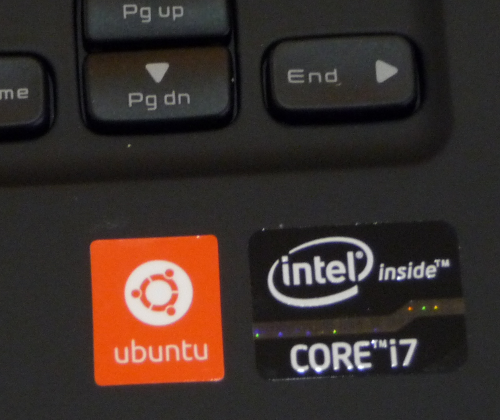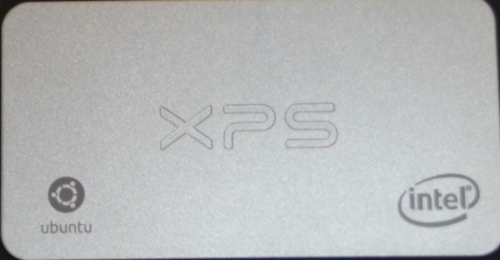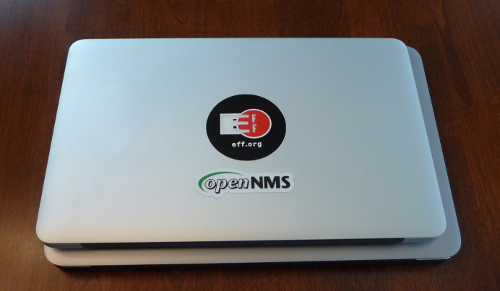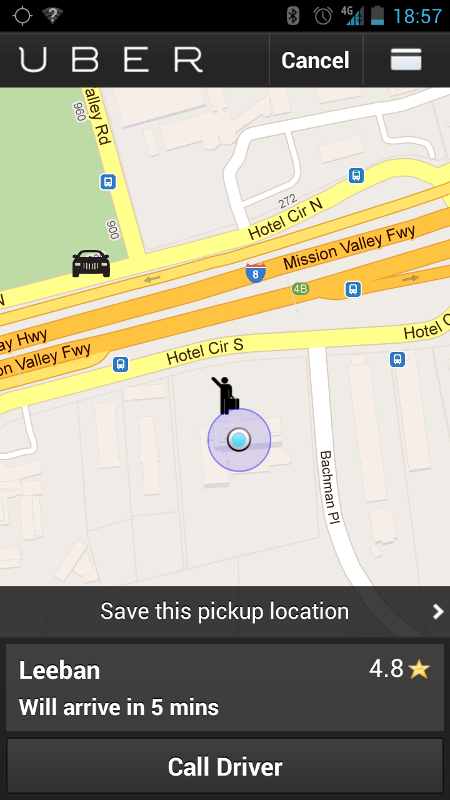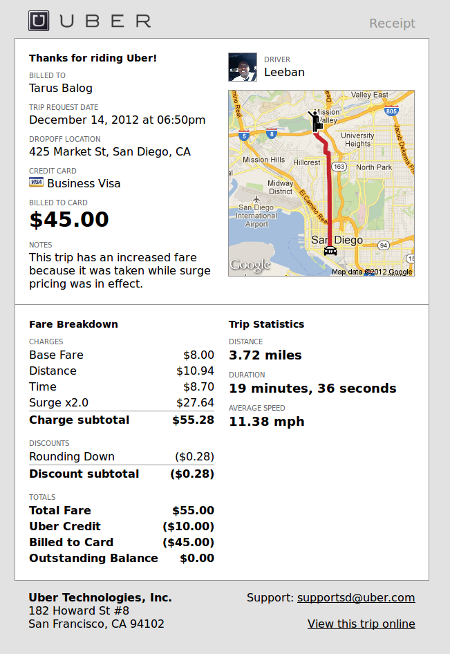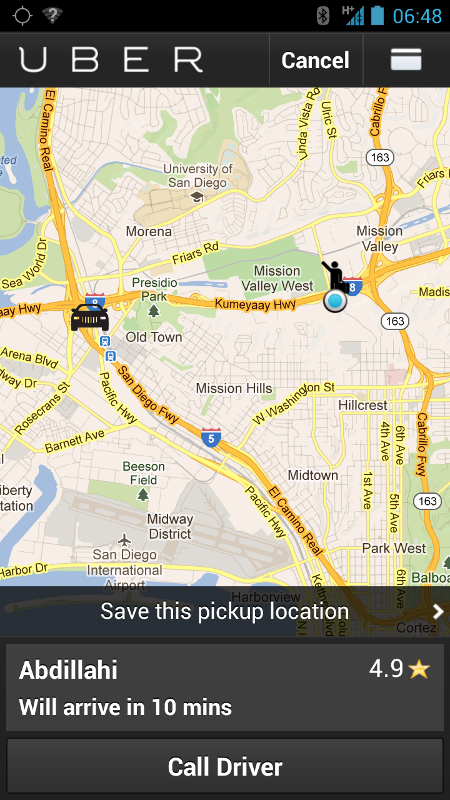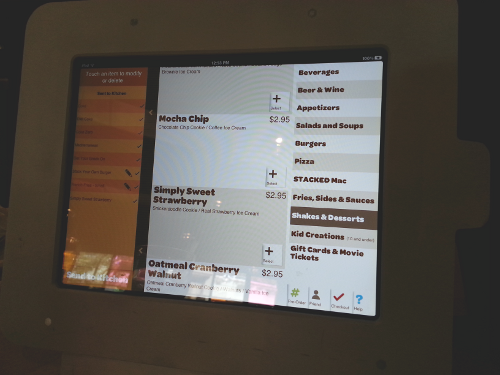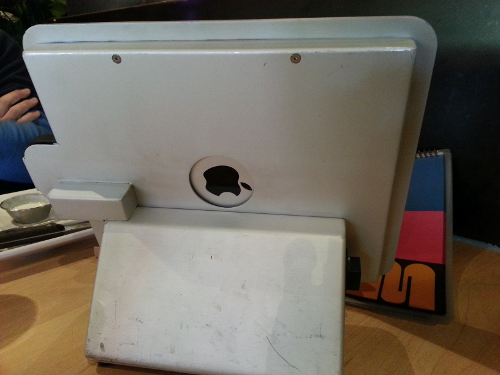TL;DR
This is a review of the augmented reality game Ingress, and contains no OpenNMS content. Ingress combines a massively multi-player on-line game with geocaching, and it can be quite addicting. I’ve spent a lot of time this week going from Level 3 to Level 4, and while I enjoyed it I don’t have enough interest to spend a lot more time on it. I do find some of the civil libertarian issues it raises, such as citizen access to public spaces, interesting. Currently Android only, it is a great example of how not all cool things are invented by Apple.
Overview
The backstory is the weakest part of the game. It goes something like this: an alien race called the Shapers appear on Earth, and with them, portals. Portals are gateways to another dimension, etc. that leak something called “exotic matter” or XM. You pretty much need XM do to anything.
This event has caused the world to divide into two factions (three, if you count those that don’t give a flip). One, the Enlightenment, wants to spread the influence of XM in order to take humans to the next evolutionary level. They are the “green” team. The other, the Resistance, seeks to limit the influence of the aliens because they fear it is harmful. They are the “blue” team.
Why I think this is weak is that it really doesn’t affect game play at all. Each team uses the same items and methods for similar objectives: the creation of control fields across the land. The idea is that all of the people (mind units, or MU) under the fields are either protected from the alien influence (in the case of a blue field) or more prone to enlightenment (in the case of a green field). Estimated world totals of MU by factions are displayed in the app.
Gameplay
Okay, the key to everything are those portals. Portals are placed by Niantic and are usually associated with public places such as post offices, fire stations, and libraries. In North Carolina with have a system of historic markers, and it looks like they have imported the whole database in order to place portals. In order to interact with a portal, you have to be next to it (for the most part). Hence the geocaching aspect of the game – you physically have to visit places in order to do anything. Note that tie-ins with companies like Zipcar and Jamba Juice have added those locations as portals as well, so it isn’t limited to just government buildings but instead the only rule is that they are supposed to be publicly accessible (which is stressing the definition in some cases).
The way you interact with the world of Ingress is with your scanner – i.e. the app on your Android phone. Combining the GPS and Google Maps, when you are close to a portal it will show up on your scanner. Your position is represented by a little arrow icon, and your area of influence is represented by a circle around that icon.
XM is represented by little, blobby white dots. Once those enter your influence, they will fly toward your icon and increase your XM totals. They can be found anywhere, but tend to cluster near portals.
Portals show up as smoky/glowing/other-worldly columns. Those controlled by the Resistance show up as blue, and those owned by the Enlightenment show as green. Uncaptured portals are gray.

In order to capture an uncaptured portal, you first have to be in range. Then you place an item called a resonator on the portal and then your faction will own it.
Completing actions earns you Action Points (AP). This is similar to “experience points” in other games. The more AP you collect, the higher your access level. Most items in Ingress have a level associated with them, and the higher your player level the more items you can use. At the moment the lowest level is L1 and the highest is L8.
There are seven things you can do to a portal. First, you can “hack” it. This is the main “farming” task in Ingress. Hacking a portal will give you items most of the time (sometimes you get nothing). Once you hack a portal you can’t hack it again for 300 seconds, and there is a limit to how many times you can hack a particular portal in a given amount of time – I think it is currently four times in a 24 hour period but I’m not sure. If you try to hack a portal before you are allowed, your scanner will display a “portal running hot” message with the time you must wait until your next attempt. If you have exceeded all attempts for the day, you get a “portal overloaded” message with no time displayed.
The next thing you can do to a portal is place a resonator, assuming the portal is uncaptured or belongs to your faction. There are eight spots for resonators at the cardinal points around the portal. A single player can place up to eight L1 resonators, but only 4 L2 or L3 resonators, etc. The higher the average level of resonators, the higher the level of the portal and the more energy it can store.
If a portal is fully populated with resonators, you can link it to other portals, assuming you have an item called a Portal Key. By hacking portals (of any faction) you can collect multiple copies of these keys. If you are at one portal and you have the Portal Key for another nearby portal, and both portals are owned by your faction, you can attempt to link them. Whether or not you are successful depends on the distance between the portals and whether or not there are any other links in the way (links cannot cross). The higher the level of the portal, the longer the link can be. The Portal Key is destroyed when the link is created.
Now the big thing to do is create a control field by linking three portals in a triangle. This results in a lot of AP and on the “intel map” the underlying area will show up as being controlled by your faction.
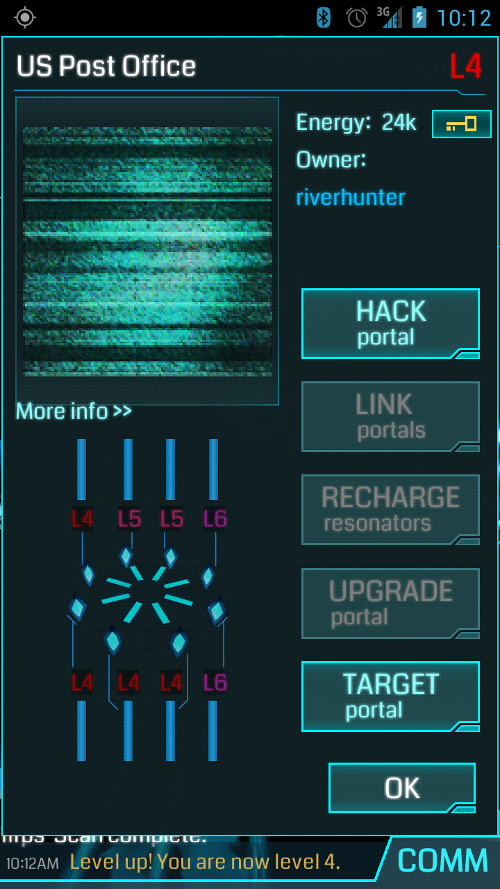
So, that’s three things (hack, place a resonator and link). The fourth is the ability recharge a portal. Portals hold Energy proportional to their level, but that energy is constantly draining, especially in the presence of links and fields. In order to keep the portal from decaying totally and becoming uncaptured, it has to be recharged. You can recharge it from your XM reserves if you are next to it (and it belongs to your faction) or remotely if you have a Portal Key.
The fifth is that you can upgrade the deployed resonators to ones of a higher level.
The sixth is that you can “target” a portal. All this does is show the distance and direction to the portal on the scanner.
All of these, except hacking and targeting, assume your faction owns the portal or it is uncaptured. The final thing you can do is attack a portal. To do this you need an item called an XMP burster. These are farmed through hacking and are single use. The higher level bursters do more damage, of course, and are used first in an attack. The more Energy a portal has, the longer it will take to destroy. A user for the faction that controls a portal can recharge it during an attack assuming they have XM and are either nearby or in possession of a Portal Key.
Position when using XMP busters is important. Like Phasers, they do more damage close in, so you will want to position yourself next to the resonator when using them. Once all the resonators on an enemy portal are destroyed, it becomes uncaptured and you can then deploy resonators to claim it. Note that hacking and attacking enemy portals are frowned upon by the portals themselves, and they will zap you with an XM draining bolt. When your XM gets too low, you won’t be able to hack, and when it gets even lower the scanner will stop operating until you find more. Being drained of XM does not appear to kill your character.
There are some other aspects of the game. On the Niantic website they drop clues to figuring out passcodes that can be entered into the scanner to receive XM, AP and items. There are power cubes of XM that you can find. But basically the idea is to capture unclaimed portals, destroy enemy portals, create links and control fields.
My Experience
I was first exposed to Ingress through Michael Shuler on G+. I didn’t really understand it more than it was a geolocation game. I strain to call it augmented reality, since you don’t actually see these portals through a camera but instead on a map, but since it was (and still is) a closed beta I didn’t pay too much attention to it.
Then at the OpenNMS Users Conference I saw how interested Alex Finger was in the game, and I decided to apply for an account. He was on the green team so I was determined to be blue just to be contrary, but he pointed out that most of the area where I live is blue, so I should be green just to have something to do. It was a great piece of advice, since you can’t change factions and I later learned that my friend Donnie Springfield was also on the green team and he’s local.
A few days later I got an account and started playing with it, but it didn’t really take off until Eric Evans came to the main OpenNMS office for the week and really showed me how to play it. He is on the blue team, so we made a bunch of jokes about “smurfs” and “frogs” but as I mentioned before the backstory really doesn’t matter – it’s still capture the flag.
The week I spent with Eric and for the weeks after I started playing more. I found myself going out of my way to visit portals. I attacked and captured my first one. I visited portals while traveling for OpenNMS. As I started closing in on Level 4, Donnie showed me how to look for uncaptured portals on the Ingress Intel map. You have to zoom in real close so it can be tedious, but when I discovered a cluster of seven(!) uncaptured portals nearby, I headed out into the country in the early morning rain to start farming AP to level.
When I found myself in a light sprinkle, knee deep in a cow pasture straining to get a data signal so I could fling a resonator out to that remote portal – I knew I had a problem.
I hit Level 4 this morning and I’m going to back way off for awhile. First of all, I’m too busy for such games. Second, even though being at a higher level is fun, nothing in the game play really changes. It takes 70K AP to reach L4, and 1.2M to reach L8. No matter how long a link you create, you get 313 AP. A link that creates a field gets you 1250 more. Hacking an enemy portal gets you 100 AP. That’s a lot of play to reach 1.2M (see the Wikipedia article for more complete info)
When I drive I do find myself hitting the brakes when I see a historic marker or a flag.
I think the game play could be improved by increasing the AP for longer links/bigger fields, or better yet, put the “multi” back in multi-player and have groups of people get more abilities when they work together (I’ll form the head).
I am curious as to the bandwidth requirements of this game, especially if they make it a truly augmented reality app. As I fly by at 60 mph in my car with Ingress running, I can’t imagine the amount of data that would have to flow to keep up. Multiply that by thousands if not millions of others and you have a cool engineering challenge.
Dangers
I was in San Francisco a few weekends ago and was meeting Geoff Davis for dinner near 24th and Mission. It’s not a bad neighborhood but it isn’t exactly great. I got there early so decided to spend the time hacking the numerous portals in the area. At one point I looked up and found myself in an alley, narrow walls surrounded by some pretty amazing graffiti, but not exactly the safest place to be in the evening carrying around a couple of grand in electronics.
Trust me – in many places wandering around in circles while constantly looking at your phone is not considered normal. Since many if not most portals are near public buildings, in this post-9/11 world expect to be questioned if not threatened.
As I was attacking the fire department portal this week, I had to wander around back to get close to that last resonator. When it died I let out a little “whoop” and turned to see three rather large firemen looking at me all unfriendly-like, and one asked “May we help you, sir?”.
I laughed, told them I was playing a computer game, and showed it to them on my phone. They thought it was pretty cool.
Compared to actual geocaching, Ingress doesn’t require anything to be left on the property or anything to be dug up, etc.
I got a different experience last evening when I was attacking the post office portal. The postmaster, a tall, somewhat severe lady, was taking out some trash so I made sure to say “hi” and let her know what I was doing. She wasn’t happy and suggested that it was illegal for me to be outside of the “public” areas of the post office building. Now, I was under the impression that any area outside of a post office was public, and since I wasn’t interfering with business nor destroying property that I had every right to be there. I spent some time last night doing research and I think I am correct. First off, the idea of “trespassing” is predicated on there being “no trespassing” signs clearly posted. There is an “Authorized Vehicles” sign but nothing about “Authorized Personnel”.
It started to piss me off, and indicates one problem I have with this country. People at all levels of government seem to have forgotten that they serve at the will of the people, and especially at the lower levels, from TSA employees to rural postmasters, seem to want to claim more authority than they really have.
Now I’m not saying she shouldn’t have asked about a weird guy acting strangely next to a government building, but once explained I was hoping she’d have the cool and friendly reaction of the firemen. Instead, she decided to fluff up her feathers and imply it was verboten. Part of me wants to force the issue but the lazy part of me wants to pick a different battle.
Which brings me to the name “Ingress”. I think it is brilliant. Not only does it refer to “signal leakage“, such as the portals “leaking XM” into our world, but also property law, as in the rights of a person to enter a property.
If you are into this sort of thing, and you have an Android phone, I encourage you to check it out. In any case, I think Google has a hit on their hands.
